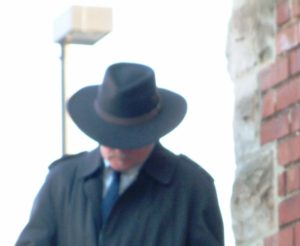I would say most of you know the story of how the United States’ involvement in Vietnam ended. As Saigon fell on April 29 -30, 1975, US civilians followed instructions given in a booklet. The song “White Christmas” played over the US-based radio station, which signaled US civilians to get to the American Embassy or other pre-determined location because the final evacuation was underway. Most of us have seen pictures or videos of personnel fighting to get to the top of the US Embassy, where they boarded helicopters that delivered them to US Navy ships off-shore. There are pictures or videos of people fighting to climb over the Embassy gates the communists approached Saigon.
But how did the United States get involved in this far-away country that seemingly had little to do with our national security? In two words: “Domino Theory.” The Domino Theory, perpetuated by the Pentagon, the Central Intelligence Agency (CIA), and President Eisenhower, predicted that if Vietnam fell to the communists, most of the countries in the Far East—from Thailand to the Philippines—would also fall.
But let’s back up a little more. At the Cairo Conference in Egypt (November 22-26, 1943), U.S. President Franklin Roosevelt, British Prime Minister Winston Churchill, and Chinese Generalissimo Chiang Kai-shek agreed on how to remove the Japanese from Indochina after winning the war in the Pacific. Generalissimo Chiang was given the title of “Supreme Commander of China” which included parts of Thailand and Indochina, which included Vietnam. It was agreed the Chinese Nationalist Army would disarm and remove the Japanese from the northern portion of Vietnam, while the British would liberate the southern portion.
Soon thereafter, Ho Chi Minh, a devout communist and the leader of the Viet Minh Underground fighting against the Japanese, asked France to return to Indochina to help remove the Chinese. Ho did not want the Chinese Nationalist Army in his country. Ho’s request to the French seemed strange, since Ho was loyal to both Stalin, the Secretary General of the Soviet Union, and Mao, Chairman of Communist China. However, President de Gaulle was quick to respond by sending forces to Indochina. In 1946, with the French forces in place, Ho Chi Minh asked Chiang Kai-shek to withdraw all of his troops. Chiang was in the midst of a vicious civil war with the communist Mao for control of mainland China, so he was glad to pull out—with the exception of a few divisions in the northern region. Moreover, the British were more interested in securing their former territories of India, Burma and Singapore, so soon after removing the Japanese, the British pulled out of the southern portion of Vietnam.
The French attempted not just to liberate Vietnam, but to re-establish the territory as it had been before World War II. However, the Vietnamese wanted none of that; they wanted their independence. According to historical records, in 1946, Ho Chi Minh wrote a letter to President Truman requesting support from the United States as an independent State. Truman never answered. Some historians say Truman wasn’t familiar with Ho Chi Minh, which was why he didn’t answer. I’ll not get into that debate here.
Ho Chi Minh’s Viet Minh, which had fought the Japanese throughout World War II, were very proficient at jungle fighting. The French struggled to fight the Viet Minh, and, in 1954 at the battle of Diem Bien Phu, the French were defeated and pulled out of Indochina.
Immediately, the United States moved in to take their place because of the “Domino Theory.” For the next fifteen years, President de Gaulle accused the United States of undermining their efforts in Indochina for the sole purposes of taking over the territory for themselves, which was never the goal of the United States.
So the United States officially entered Vietnam in 1954—even though the Office of Strategic Services (OSS), a precursor of the CIA, had been in Indochina since the beginning of World War II.
How many of you knew this background story?
